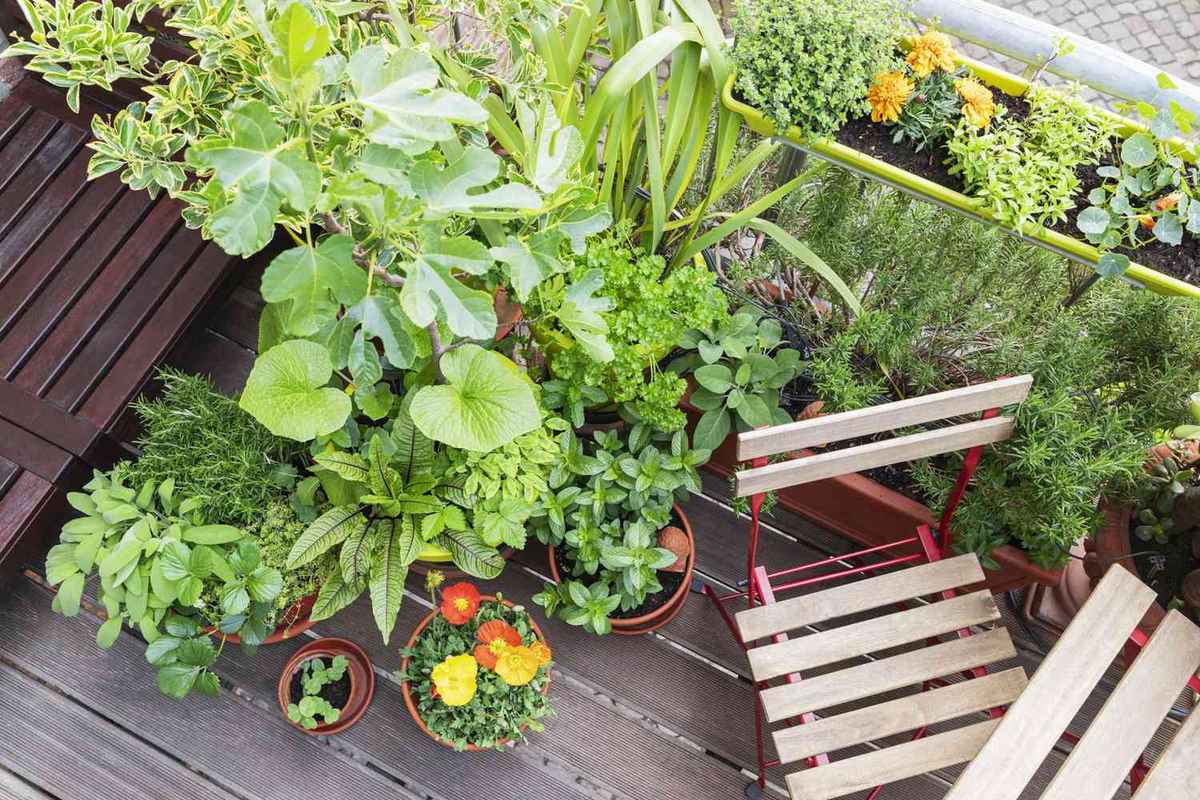Cultivating plants within the confines of a compact area, like a balcony or terrace, might pose a test, even for seasoned gardeners. At the same time, it’s a chance to unleash your creativity and revel in the experience.
Despite the space limitations, there are numerous strategies to maximize every inch of your garden. Here are some pointers to get you started:
Think About Water Access
Balcony or rooftop gardens often lack direct outdoor water access, necessitating reliance on water from sinks or bathtubs to nourish your plants. To minimize the effort of transporting heavy water containers back and forth, consider these tactics for effective plant watering:
- Use a sizeable yet lightweight watering can. Collapsible watering cans are especially suitable for balcony gardens, as they can be folded when not in use, saving space.
- Place saucers or trays beneath your plants to catch excess water and prevent wastage. Self-watering pots can also play a role in water conservation and reduce the frequency of watering.
- Skip watering cans entirely by getting a lightweight, expandable garden hose. Attach it to a kitchen sink using an adapter. These hoses can stretch up to 100 feet and retract for convenient storage when not in use.
Make Full Use of Available Space
Creating a balcony garden doesn’t require much space at all, especially when you maximize vertical surfaces like walls, railings, and overhead areas.
You can transform your balcony into a vertical oasis by incorporating pots, shelves, or trellises onto the walls. If your balcony boasts a ceiling, installing hooks for hanging plants is a smart move. Covering the railings with chicken wire offers support for climbing plants, or you can invest in plant hangers that attach to the railing’s top.
Envision your balcony garden as an extension of your indoor living area. If you select plant hues and textures that resonate with your interior decor, even the tiniest balcony can exude a more expansive and inviting feel.
Learn What You Can Grow in the Garden
Virtually any container-friendly plant can find a place in a balcony garden, assuming you have the required space and can provide the right sun or shade conditions.
If your locale experiences chilly winters, think about cultivating plants robust enough to endure the elements year-round or those that can be sheltered indoors during winter, sparing you the need to restart the process each spring.
Understand Your Limitations
Beyond the balcony’s dimensions, certain limitations could impact your plant choices and their placements. If you reside in an apartment complex or condominium, you have to ascertain the building owner’s regulations first before you start your gardening endeavors.
You should also consider the following:
- Weight – Be mindful of potential weight restrictions and regulations concerning hanging items from balcony railings and walls.
- Microclimate – While sunlight availability remains paramount, also consider wind exposure and temperature variations.
- Wind – High-altitude balconies and rooftop gardens often face strong winds that can swiftly desiccate soil, dislodge flower petals, and topple tall potted plants.
- Heat – Solar radiation reflecting off windows can heighten temperatures in balcony gardens, potentially scorching delicate foliage. Additionally, balcony construction materials, whether concrete or wood, influence heat retention.
As long as you keep these tips in mind, you should be able to design the perfect garden for your balcony despite its limitations.

